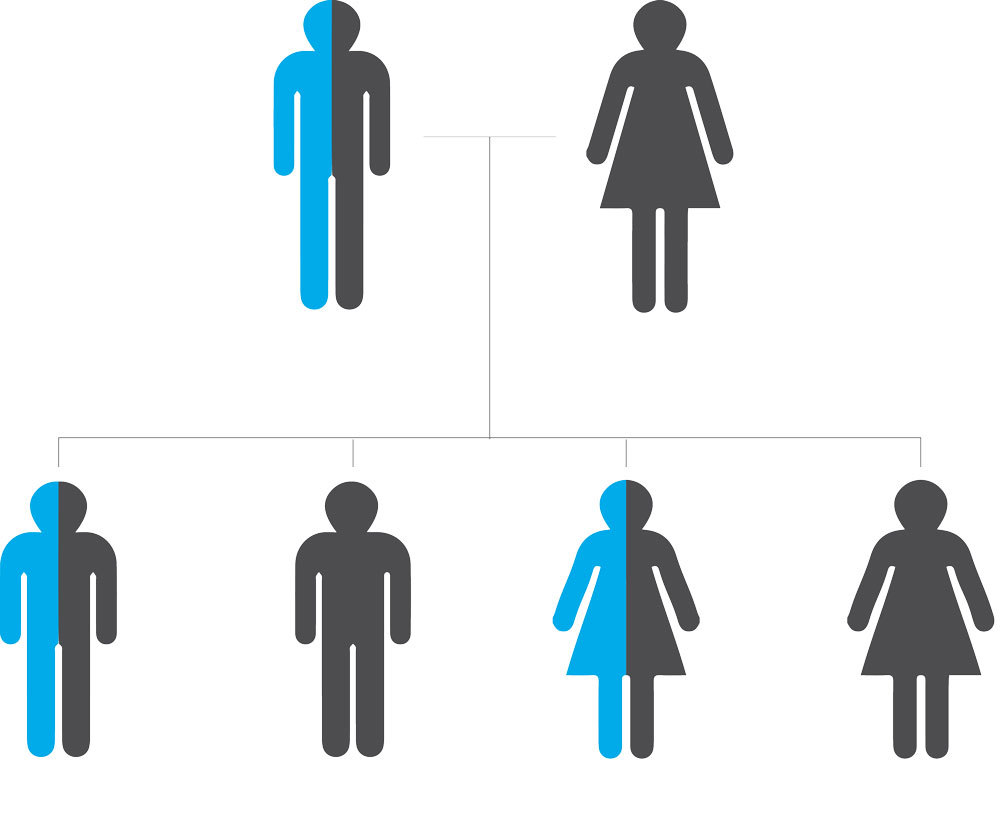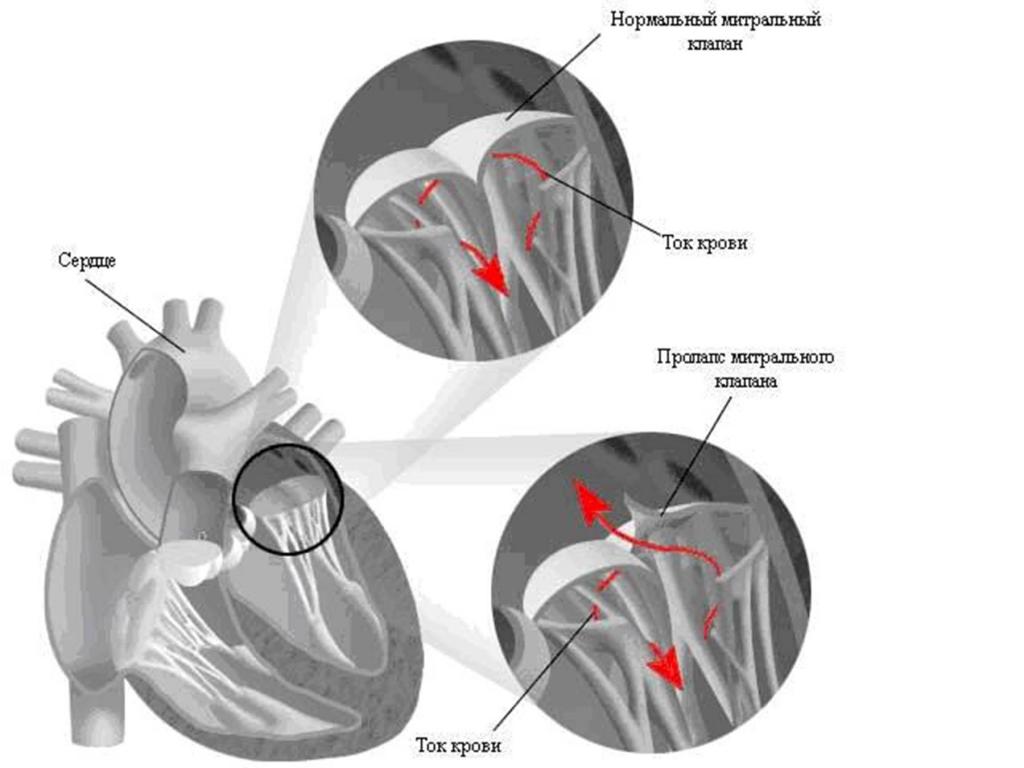What unites the people depicted in the main photo, except for their significant contribution to the history of mankind? A genetic anomaly is Marfan’s disease, which was also affected by Julius Caesar, Nicolo Paganini and Sergey Rachmaninov. This genetic mistake can be both rock and luck for its owner. What kind of disease is this - Marfan syndrome, what are the laws of its inheritance, the frequency of occurrence and consequences for the individual - this is discussed in this material.
Some general knowledge
With the development of the science of genetics, there was no more interesting object for scientists to study the laws of inheritance of traits than a person. The huge amount of data accumulated over the entire history of medicine and the pathology of diseases has contributed to the development of knowledge about the inheritance of traits in humans. Descriptive and genealogical methods in genetics made it possible to establish in people depicted in the main photo, Marfan's disease - a genetic pathology that is associated with impaired formation and development of connective tissues. This is a pathology that is characterized by a wide polymorphism in symptoms and clinical manifestation. For the first time this disease was described by a pediatrician from France Bernard-Jean-Marfan (1858-1942). In 1896, he observed a 5-year-old girl with severe pathologies, but the American geneticist Francesco Ramirez discovered the gene responsible for the symptoms of Marfan's disease in 1991.

Pathology genetics
The cause of Marfan syndrome disease is a gene abnormality (FBN1) located on the fifteenth chromosome. This gene is normally responsible for the synthesis of fibrillin - a protein of connective tissue, each of us has it. But due to the presence of two alleles of any gene in homologous (one pair) chromosomes, not all people suffer from this disease. It occurs in one person out of 5 thousand and the type of inheritance of Marfan's disease is autosomal dominant. This means that if one of the parents has a syndrome (two alleles of the gene are dominant), and the second is healthy, then with a probability of 50% the child inherits the disease. The genetic mechanism and type of inheritance of Marfan's disease is confirmed by clinical observations and laboratory diagnostics. This protein, in addition to supporting function in the human body, plays a role in the formation of growth factors. Abnormal fibrillin promotes the formation of a transformed growth factor TGF-β, which leads to a negative effect on the smooth muscle tone. There are elastin fibrillin fibers throughout the human body, but they are most concentrated in the aorta, in the ligament by which the lens joins the celiac body and other ligaments. The genetic mechanism of Marfan's disease leads to the accumulation of TGF-β in the connective tissue of the valves of the heart, lungs and blood vessels, which weakens them.
Clinic and Syndromes
Marfan syndrome is a disease of connective tissue, and all manifestations are associated with changes in bones, joints, skin. The disease has no unique and unambiguous symptoms. But in the presence of signs such as elongated limbs and fingers (spider hand), anomalies of the dislocation of the lens and aortic aneurysm, it is entirely possible to assume that the patient’s genotype contains an abnormal gene for Marfan’s disease. All disease syndromes are divided into:
- lesions of the skeletal system;
- damage to the circulatory system;
- eye damage;
- effects on the respiratory system;
- effect on the nervous system.
Marfan's disease can occur in moderate or severe forms, it all depends on the degree of influence on organ systems. With a slight manifestation of the disease, everything can be limited to its carrier with long arms and legs with thin fingers. Why is Marfan's disease terrible? These are complications - a violation of the structure of blood vessels and primarily the aorta, damage to the valves of the heart, the hard shell of the spinal cord and many other symptoms.
Bone and vision lesions
People with Marfan's disease are more often characterized by a disproportionate appearance (the ratio of arm span to height is 1.05). They are tall, with disproportionately elongated limbs and a brush with long fingers (arachnodactyly). Patients develop pathologies of the spinal column - scoliosis, the chest is deformed inward (funnel-shaped) or outward (keeled). Often there is flat feet, an irregular bite shape. The excessive flexibility of the joints, which is often accompanied by pain, is characteristic.
Patients often have visual impairment (astigmatism, myopia, less often farsightedness). Ectopic lenses (location anomalies) are recorded in 80% of patients. More often, pathologies of vision appear after weakening of connective tissue in adults, but for patients with Marfan's disease, glaucoma is often recorded in childhood and adolescence.
The most serious consequences of the disease
Disorders in the circulatory system and heart activity are the most serious complications. Violation of the rhythm of heart contractions, shortness of breath and fatigue, cold limbs - these are the external manifestations that should alert the patient. The presence of noise in the heart. Pathological manifestations in an electrocardiogram, angina pectoris are the grounds for further examination. Disorders in the connective tissues of the heart are manifested in valve prolapse (mitral and aortic), an enlarged aorta or its aneurysm in Marfan's disease (photo below).

Of particular danger is the disease for women during pregnancy. Even in the absence of visible complications during pregnancy, patients with this diagnosis have an increased risk of aortic dissection, which can lead to death. When planning a pregnancy, women with this diagnosis are advised to undergo a thorough examination of the cardiovascular system, and undergo an echocardiographic examination every six weeks during gestation. Natural birth in such patients is quite possible.
Lungs and CNS
The consequence of the disease may be the development of sudden pneumothorax. When, when the connective tissue is weakened, air enters the cavity between the lungs and chest. If you do not pay attention to such signs as blueness of the face, shallow breathing, shortness of breath and chest pain, the development of pneumothorax can lead to the death of the patient. Marfan syndrome is associated with sleep apnea and obstructive pulmonary disease with an unknown cause (idiopathic).
Dural ectasia, the sagging of the hard shell of the spinal cord, can affect the quality of life of a patient with this disease. And although this is not fatal, but constant pain in the lumbar region, lower limb neuralgia and headaches greatly complicate the patient's life. In addition, the development of degenerative damage to the intervertebral discs can provoke various dysfunctions of the nervous system.
Diagnosis of the disease
The leading diagnostic criteria are violations in the cardiovascular system, especially aneurysm and aortic expansion. But the final diagnosis is made by a comprehensive examination (there are more than 30 clinical signs of the disease) with the participation of geneticists, cardiologists, ophthalmologists, orthopedists. If, when studying family history, it is established that the disease is hereditary, then the diagnosis is confirmed in the presence of violations of at least two of the body systems. If the hereditary nature of the disease is not established, then the diagnosis is confirmed if there is a lesion in three systems. A diagnosis may take several years, because in childhood, the symptoms may not appear or appear slightly.
Pathology treatment
Today there are no drugs that would cure this disease. But the achievements of modern diagnostics and medicine can significantly improve the quality of life of patients and increase life expectancy. Early diagnosis allows for prophylactic therapy for relatively minor injuries of organ systems, and the achievements of cardiac surgery can replace damaged heart and aortic valves.
Violations in the skeletal system and vision, although not fatal, are quite serious. They can be corrected in the usual way with the use of muscle relaxants and physiotherapy. To correct the chest, minimally invasive procedures developed by the American physician Donald Nus in 1987 are widely used. This technique provides for surgical intervention to correct the chest in children and leads to a significant improvement in the results of pulmonary functions.
How to warn
Preventive measures are reduced mainly to regular examinations by specialists. In the case of detection of pathologies of the cardiovascular system, the progression of aneurysms is prevented, the use of drugs that eliminate arrhythmia, normalize blood pressure.
For people with this disease and their families around the world there are specialized medical centers where genetic counseling is provided.
Marfan's disease is not a sentence
This pathology has no sexual, ethnic or social preferences. Most patients have relatives with this disease, but up to 15% of all cases are associated with new gene mutations. Among those who have Marfan syndrome, there are quite a few successful people, both the present and the past. In addition to the features of the skeleton, this disease rewards its owners with a high level of adrenaline in the blood, increased working capacity and quick reactions, cool temper and love of life. This is a disease that is one of the five most common among celebrities. Here are just a few examples of successful people with this syndrome.
Expressive and famous
Legends went up about long fingers and incredible expressiveness in the performance of musical works by Nicolo Paganini (1782-1840) until the beginning of the 20th century. The last years of his life, the violinist was in a very nervous state, all joints hurt, and the doctors did not help. He died at the age of 57, and his violin, the “widow of Paganini,” bequeathed to the city of Genoa so that no one else could play it.
Abraham Lincoln (1809-1865), in addition to being the highest president of the United States (height 195 centimeters), became the country's national hero and the liberator of slaves. Marfan's syndrome hurt 11 generations of Lincoln and most of them lived happily to gray hair.
Hans Christian Andersen (1805-1875) was distinguished by a peculiar appearance and a very explosive character. He was called a brilliant paranoid, he was afraid of dogs, thefts, to be buried alive, to treat teeth. He died at the age of 67, not recovering from injuries sustained when falling from bed.
Sergey Rachmaninov (1873-1943) was the last representative of romanticism in Russia. The great conductor, composer, pianist did not live three days before his 70th birthday. Own unique style in music brought him worldwide fame during his lifetime.
Athletes with pathology
Flo Hyman (1954-1984) was very shy of her height (196 centimeters) in her youth. But this did not stop her from becoming the silver medalist of the Olympic volleyball games for women. Died during the game due to aortic dissection.
Isaiah Austin (1993) - a basketball player from the United States, a central NBA with a growth of 217 centimeters (pictured). With all the success of the athlete, he saw with only one eye. His career ended in 2014, when he was diagnosed with Marfan syndrome.
Michael Phelps (1985) introduced America to the Olympics at age 15. This swimmer with Marfan syndrome is the only one in the history of all sports to become the Olympic champion 23 times, 26 times the world champion in a 50-meter pool. His height is 193 centimeters, he takes 14th place in the ranking of GQ magazine "50 people and phenomena that made the XXI century the way it is."